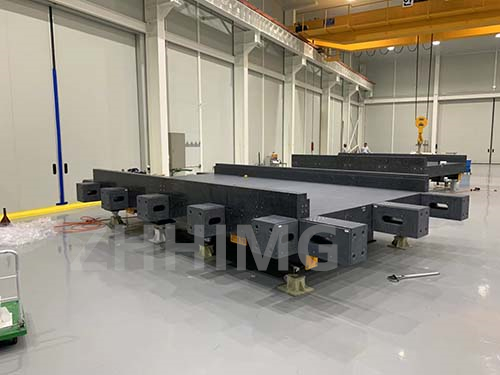With the rapid development of automation and robot technology, linear motor is widely used in various automation equipment and robot systems as the core component to achieve high precision and high speed motion control. In linear motor applications, the integration of granite precision bases with automation and robotics not only provides a stable, precise support base, but also improves the performance and reliability of the entire system. However, this integration process requires consideration of several key factors to ensure the smooth operation and efficient performance of the system.
First, size matching and compatibility
When integrating granite precision bases with automation and robotics, the first thing to consider is size matching and compatibility. The size and shape of the base must be matched to the automation equipment and robotic systems to ensure that they can be tightly integrated into a stable whole. In addition, the interface and connection of the base also need to be compatible with the rest of the system for quick and easy installation and removal.
Second, accuracy and stability
Accuracy and stability are the core requirements in linear motor applications. Therefore, when selecting a granite precision base, it is necessary to ensure that it has sufficient accuracy and stability to meet the needs of automation equipment and robot systems. The accuracy and stability of the base will directly affect the positioning accuracy, repeated positioning accuracy and motion stability of the whole system. Therefore, during the integration process, the accuracy and stability of the base need to be rigorously tested and evaluated.
Third, bearing capacity and rigidity
Automation equipment and robotic systems usually need to withstand large loads and impact forces. Therefore, when selecting a granite precision base, it is necessary to ensure that it has sufficient bearing capacity and rigidity to withstand these loads and impact forces. The bearing capacity and rigidity of the base will directly affect the stability and reliability of the whole system. If the bearing capacity and rigidity of the base are insufficient, the system may be deformed or damaged during operation, which will affect the performance and reliability of the system.
Fourth, thermal stability and temperature adaptability
In automated and robotic systems, temperature changes can have an impact on the performance of the system. Therefore, when selecting granite precision base, it is necessary to consider its thermal stability and temperature adaptability. The base should be able to maintain stable performance under different temperature conditions to ensure the normal operation of the entire system. In addition, it is also necessary to pay attention to the heat dissipation performance of the base to avoid performance degradation or damage caused by overheating.
Maintenance and maintenance
Finally, when integrating the granite precision base with automation and robotics, its maintenance and maintenance issues also need to be considered. The base should be easy to clean and maintain in order to maintain its good performance during system operation. In addition, it is also necessary to consider the durability and life of the base to ensure that the entire system can operate stably for a long time.
To sum up, when integrating granite precision bases with automation and robotics, several key factors need to be considered, including size matching and compatibility, accuracy and stability, load bearing capacity and rigidity, thermal stability and temperature adaptability, and maintenance and maintenance. By taking these factors into account, smooth operation and efficient performance of the entire system can be ensured.
Post time: Jul-25-2024

